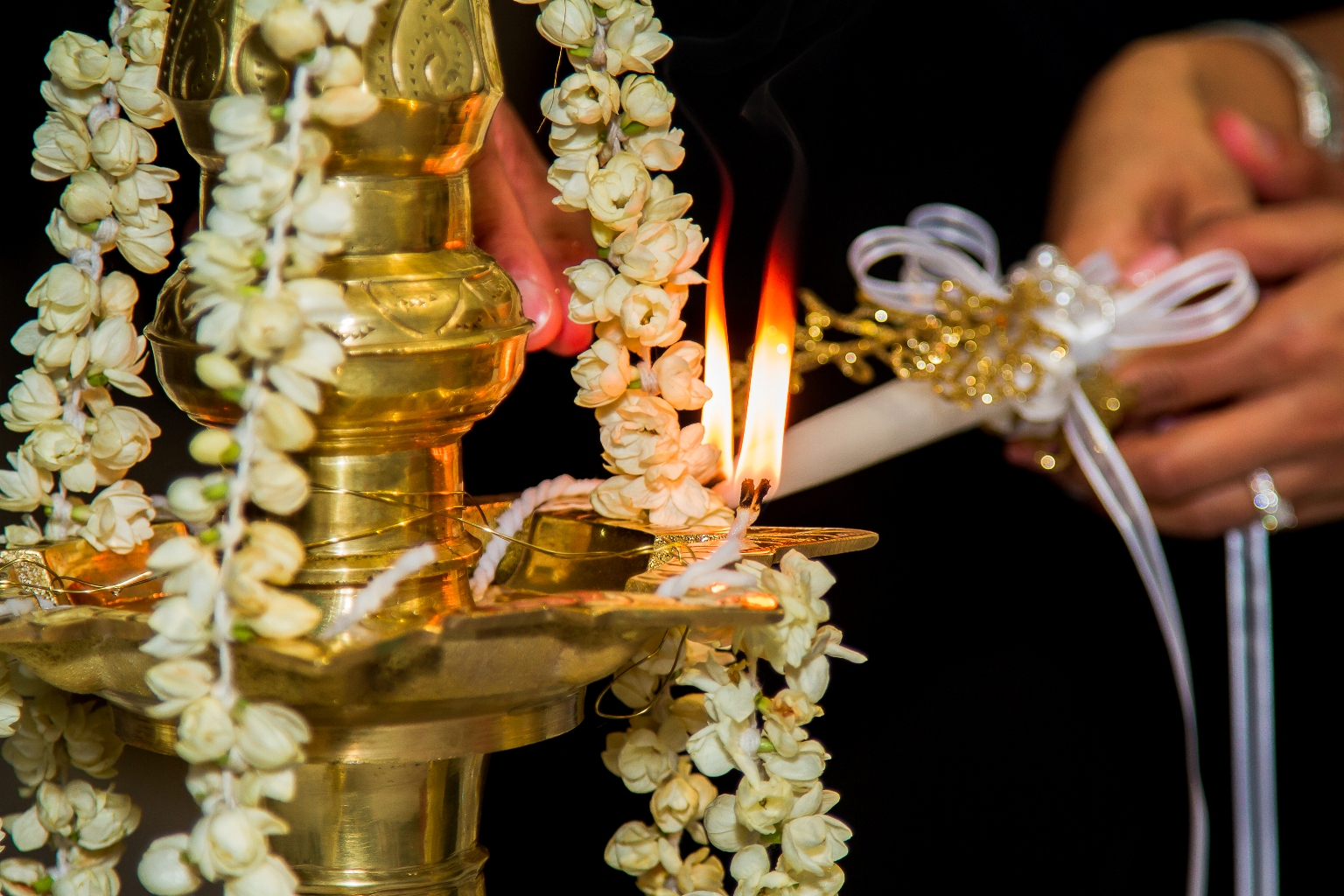While the Buddhist Sinhalese wedding engagement is generally a blend of Western party and Buddhist religious tradition, the wedding itself is pure Sinhala with traditions that have been passed down for centuries.
Photo via Samira & Nigel’s Wedding
Sri Lankan Wedding: Introduction
Sri Lankan Wedding Engagement and Pre-Wedding Traditions
Sri Lankan Wedding Traditions- You’re here!
Sri Lankan Bridal Attire and Jewelry
Sri Lankan Wedding Food and Desserts
The Poruwa Ceremony is the centerpiece of the Sinhala wedding. Before the British formally created registered marriages in the 1870s, the Poruwa Ceremony was considered a recognized marriage agreement in Sri Lanka. The modern Poruwa Ceremony borrows traditions from different Sri Lankan communities and blends them together to create a harmonious Sri Lankan wedding custom practiced by Tamils and Sinhala people.
The Poruwa is a beautifully decorated wooden platform, which can feature an overhanging roof that looks like a sort of silk umbrella. The bride and groom walk up to the Poruwa together, leading with their right feet, and face their guests. The guests are divided based on their relation to the couple – the bride’s side sits on the right side of the platform and the groom’s side on the left.
Photo via Samira & Nigel’s Wedding
The couple greet each other with their palms together. The Shilapadhipathi, who is more the MC than a priest, hands the couple a fistful of betel leaves. They accept the gift and hand them back so he can place them on the platform. These leaves are an offering to the gods.
The bride’s father places her right hand on the groom’s right hand as a formal giving away of the bride. The groom’s brother, standing to the side this whole time, hands the groom a tray of seven bunches of betel leaves, each under a coin. The couple takes turns placing the leaves and their coins onto the Poruwa, honoring seven generations of family on both sides.
Photo via Samira & Nigel’s Wedding
The groom’s brother now hands him gold chain which the groom places around the bride’s neck. Her uncle walks up to the Poruwa and ties the pinky fingers of both the bride and groom together. He pours water over the fingers so that the water and the ground it lands on can be the lasting witnesses to the union. The bride’s uncle then turns the couple three times clockwise on the platform.
Photo via Samira & Nigel’s Wedding
Next the bride’s mother is honored: the groom hands his bride a white cloth which she passes to her mother. This cloth symbolizes the groom’s happiness and gratitude towards his new mother-in-law for raising his bride. The groom’s mother then hands her son a sari which he hands to his wife and she hands to her mother (can you keep up?).
Photo via Samira & Nigel’s Wedding
The bride’s mother gives the couple a special mix of milk, rice and kavum, a deep-fried Sri Lankan pastry. the bride feeds her husband one piece, and he feeds her another in return. The newlyweds step down from the platform, helped by the groom’s side,at a previously determined auspicious time. A group of teenage girls related to the couple sing ‘Jayamangala Gatha,’ and the Shilpathipathi breaks a coconut in half, blessing their union.
Photo via Samira & Nigel’s Wedding
The Poruva ceremony ends with the bride and groom lighting a bass oil lamp together, promising to keep their hearths burning for always.
The Poruva Ceremony is sometimes followed by a Western-style reception. Couples may add their own spin to their Poruva Ceremony with dancers who enter before them or a garland exchange, but generally Buddhist Sinhalese couples stick to the above. All in all the Poruva Ceremony is a lasting vestige of Sri Lankan culture and is honored as such.
Photo via Samira & Nigel’s Wedding
Now on to the bridal clothes!







